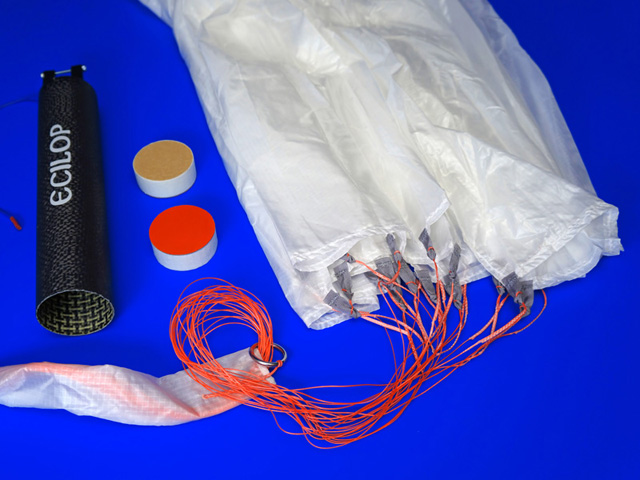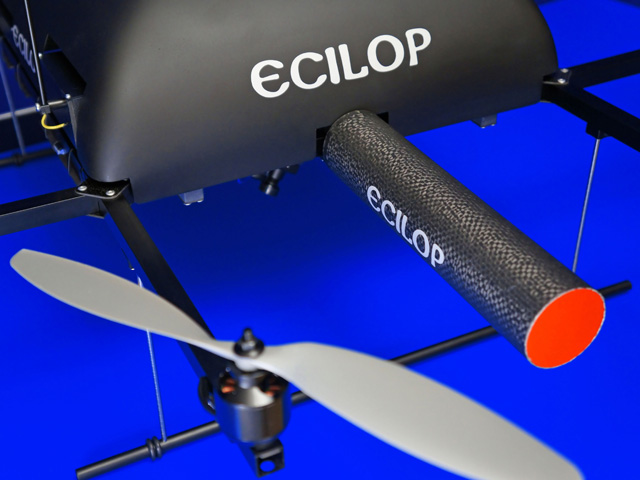|
Technical details: Mass of capsule with seals and blasting charges - 95g (two units) 1. Two parachutes on the sides create a balanced load on the multicopter; 2. During ejection, the reactive impulses neutralize each other’s effect. The chassis of the drone is not tossed sideways or rotated; 3. The pyrotechnical ejection completely unfolds the parachute dome; 4. The risk of a parachute being ejected downwards and the drone falling on it is compensated by the presence of a second parachute; 5. As a rule, multi-dome designs provide for a much more stable descent of the cargo load ("Basics of parachute design and calculation ", N. Lobanov, page 76). 6. Reliable high-quality parachutes are used. They are custom-made at a specialized factory in Russia.
Below is a drone with two rescue parachutes. The capsules are located symmetrically on each side of the aerial vehicle and eject parachutes simultaneously. The parachute ejection vector originates from the center of mass of the drone. When the parachutes are ejected, jet impulses compensate one another. Parachute ejection only becomes possible after the engines are shut down. To eject the parachutes, you need to switch the trigger on the remote control twice. The parachute ejection force is sufficient for their complete unfolding. |





